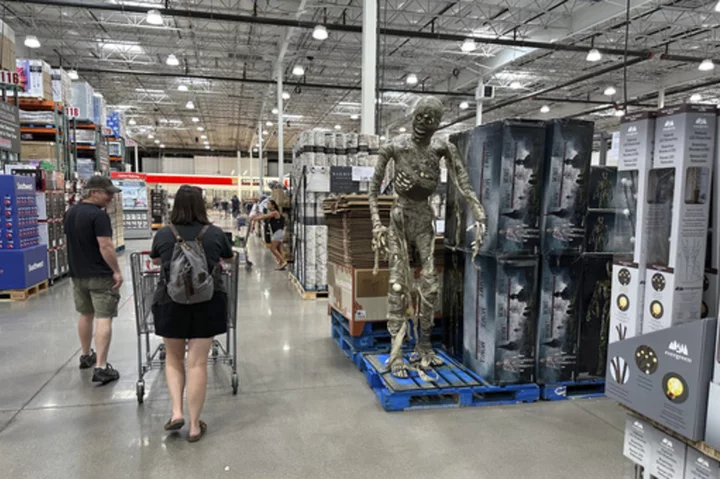WASHINGTON (AP) — An inflation gauge closely tracked by the Federal Reserve remained low last month, adding to signs of cooling price increases and raising the likelihood that the Fed will leave interest rates unchanged when it next meets in late September.
Thursday's report from the Commerce Department showed that prices rose just 0.2% from June to July, the third straight modest increase. Compared with a year earlier, prices rose 3.3% in July, up from a 3% annual increase in June. The year-over-year figure, though, is down sharply from the 7% peak it reached a year ago, though still above the Fed's 2% inflation target.
The latest data follows other recent reports that suggest the economy and the job market may be slowing enough to cool inflation pressures. The number of advertised job openings, for example, tumbled in July, and fewer Americans are quitting their jobs to seek better opportunities. Both trends ease the pressure on companies to raise pay to find and keep workers — a move that tends to perpetuate inflation as employers raise prices to offset their higher labor costs.
Excluding volatile food and energy prices, “core” inflation ticked up just 0.2% from June to July, the same as from May to June. Compared with a year earlier, core prices rose 4.2%, up slightly from 4.1% the previous month. The year-over-year core figures rose partly because of much smaller price increases a year ago. The Fed's policymakers closely monitor core prices as a telltale signal of where inflation might be headed.
The inflation gauge that was issued Thursday, called the personal consumption expenditures price index, is separate from the better-known consumer price index. Earlier this month, the government reported that the CPI rose 3.2% in July from a year earlier, down from a peak of 9.1% in June 2022.
Fed Chair Jerome Powell underscored the tricky dynamics surrounding the economy and inflation in a high-profile speech last week at an annual conference of central bankers in Jackson Hole, Wyoming. He stressed that the Fed would “proceed carefully” as it considers its next moves.
“Two months of good data,” Powell said, “are only the beginning of what it will take to build confidence that inflation is moving down sustainably toward our goal. We can’t yet know the extent to which these lower readings will continue.”
Spending in July jumped around the July 4th holiday, according to data from the Bank of America Institute, which tracks consumer activity through its credit and debit cards. And a pickup in online spending occurred in mid-month, likely because of Amazon’s “prime” shopping day, the institute said. Later in the month, entertainment spending surged, probably reflecting the popularity of the “Barbie” and “Oppenheimer” movie releases.
Those trends likely pulled some spending away from major retailers, some of which reported sharp sales declines in the spring and early summer, including Macy’s, Foot Locker and Kohl’s.
Yet many discount retailers, including Walmart, TJ Maxx and Dollar Tree, reported growing sales. That suggested that lower- and middle-income shoppers, feeling squeezed by inflation and higher borrowing costs, are seeking out bargains and focusing more on necessities.
Economists and Wall Street traders increasingly believe the Fed’s rate hike in July will turn out to be its last this year. In his speech last week, though, Powell warned that the Fed would keep its benc rate elevated until it was confident that inflation was under control.
And if the economy didn’t slow in the coming months, the Fed chair said, additional rate hikes might be needed.









